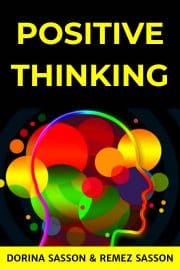
Creative hobbies are a fulfilling way to pass the time, in addition to being enjoyable. The upshot of pursuing them is improved mental clarity, a sharpening of focus, and a reduction of stress. That’s because these types of activities train your brain to stay present in the moment.
If you want to know more about how creativity helps with mindfulness and concentration, join us as we explore these connections in detail.
The Science Behind Creativity and Mindfulness
Engaging in creative hobbies directly influences your brain. These activities shift your mind into a focused, meditative state.
Key scientific benefits of creativity include:
- Boosting dopamine and triggering your brain’s reward response, which elevates mood and motivation.
- Lowering cortisol levels, reducing feelings of stress.
- Encouraging alpha brain waves that enhance relaxation.
When you paint or draw, your prefrontal cortex, which is the part responsible for planning, relaxes. This allows you to let go of worries and focus on the present.
It’s like when you’re watching waves at the beach. Your mind settles as it syncs with something calming yet engaging.
Studies show this mindfulness strengthens attention spans over time. Practicing creative tasks rewires neural pathways in ways similar to meditation.
Incorporating these hobbies regularly improves mental clarity naturally without overwhelming effort. Even 15 minutes daily can make a difference.

Weekly lessons with guidance, actionable tips, and exercises to help you step beyond the daily, ordinary life, expand your consciousness and awareness, and cultivate a life of mindfulness, inner peace, and self-awareness.
👉 Join the Inner Awakening Weekly Lessons Membership
The Role of Focused Attention in Creative Hobbies
Creative hobbies demand your full attention, which strengthens your ability to concentrate. They teach you to filter out distractions and stay present.
Focused attention plays a role as it:
- Trains the brain to prioritize one task at a time.
- Promotes deeper engagement with what you’re doing.
- Reduces mental clutter by simplifying thoughts.
It’s the same thing as focusing on threading a needle. Your mind narrows its focus, tuning out everything else for that single task.
Small details require careful observation when crafting or painting. This practice naturally improves cognitive control over time. It also creates space for better decision-making and problem-solving in other areas of life.
You don’t need to be a creative genius to get started, either. For instance, using a site like canvasbynumbers.com to convert pictures you’ve taken into paint-by-numbers projects lets you focus your attention without staring at a blank page first. This shows that creative hobbies really are for everyone.
Neuroplasticity and Creative Activities
Creative hobbies reshape the brain by perpetuating neuroplasticity. This is your brain’s ability to adapt and form new connections.
- Inner Awakening Weekly Lessons — Weekly practices for stepping beyond the daily, ordinary life.
- Moments of Joy — A guide to daily happiness from within.
- How to Focus Your Attention — Excercises to cut distraction and build concentration.
- Manifest & Achieve Whatever You Want — Step-by-step visualization for success.
This happens because creative tasks:
- Stimulate the hippocampus, improving memory retention.
- Encourage growth of neural pathways linked to focus and adaptability.
- Activate both hemispheres of the brain, enhancing problem-solving skills.
It’s like exercising a muscle, in that the more you engage in creative work, the stronger these mental pathways become.
Activities such as sculpting or sketching challenge your mind to think differently. This flexibility translates into improved learning capacity and faster thinking in daily life.
Every week, you'll get access to exclusive, members-only short lessons with practical exercises and uplifting insights. These lessons are structured to help you pause, stay grounded, and handle life’s challenges with calm and strength.
👉 Subscribe for the Weekly Calm Lessons
Consistently practicing creativity builds resilience against cognitive decline over time, too. The effort put into painting or crafting has lasting benefits for overall brain health.
Simple Steps to Start a Creativity Practice
Starting a creative hobby doesn’t have to feel overwhelming. A few small steps can make it manageable and enjoyable.
To begin:
- Pick an activity that genuinely interests you, like painting or knitting.
- Dedicate 10-15 minutes daily, keeping the commitment light.
- Gather basic supplies without overspending at first
It’s the same thing as learning to cook, since you don’t need gourmet tools for simple recipes. Start with what you have.
If you’re unsure where to begin, try watching beginner tutorials online or joining local classes. Focus on enjoying the process rather than achieving perfection.
Which Hobbies Best Enhance Clarity?
Not all creative hobbies impact mental clarity the same way. Some are more immersive, while others allow for free-flowing relaxation.
Here’s how popular activities compare:
- Painting focuses attention on details, encouraging mindfulness.
- Knitting provides repetitive motions that soothe anxiety and calm thoughts.
- Writing helps organize scattered ideas, improving mental focus over time.
Essentially, the right hobby depends on your personal needs and preferences. If you want structured engagement and to achieve clarity of purpose, try crafts requiring precision, like origami or embroidery. For a more relaxed experience, doodling or coloring may be ideal.
Wrapping Up
There’s scientific proof that creative hobbies improve focus, reduce stress, and enhance mindfulness.
These activities, from painting to knitting, reshape your brain and promote mental clarity. Start small with something you enjoy and go from there. Over time, the benefits will naturally integrate into your daily life.

Discover how to build a positive mindset.
The Guide to Positive Thinking